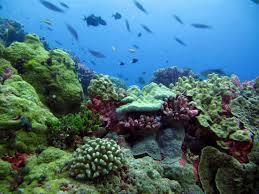The Importance of Habitat in Supporting Biodiversity
Habitat plays a crucial role in supporting biodiversity by providing a home for a wide variety of plants, animals, and other organisms. A habitat is a specific environment where living things thrive and interact with each other and their surroundings.
Healthy habitats are essential for maintaining the balance of ecosystems and ensuring the survival of species. When habitats are disturbed or destroyed, it can lead to a loss of biodiversity, which can have far-reaching consequences on the environment.
One key aspect of habitat is its ability to provide food, shelter, water, and space for different species. Each organism has specific habitat requirements that must be met for them to survive and reproduce successfully. For example, some species may need certain types of vegetation for food or nesting sites, while others may require specific temperature or moisture conditions.
Protecting and restoring habitats is critical for conserving biodiversity and promoting ecosystem health. Conservation efforts often focus on preserving key habitats such as forests, wetlands, grasslands, and coral reefs that support a high level of biodiversity.
By understanding the importance of habitat in supporting biodiversity, we can work towards creating sustainable landscapes that benefit both wildlife and humans. Whether through habitat restoration projects, protected areas designation, or sustainable land management practices, we can all play a role in preserving our planet’s rich diversity of life.
Common Questions About Habitats: Types, Examples, and Definitions
- What are the five types of habitats?
- What is an example of a habitat?
- What does habitat mean?
- What is the meaning of Habital?
What are the five types of habitats?
There are five main types of habitats, each with its unique characteristics and supporting different forms of life. These habitats include terrestrial habitats like forests, grasslands, deserts, and tundra, as well as aquatic habitats such as freshwater ecosystems and marine environments. Forests are rich in biodiversity and provide shelter for a wide range of species, while grasslands support grazing animals and diverse plant communities. Deserts are characterized by arid conditions and specialized desert-adapted plants and animals. Tundra habitats are found in cold regions with low vegetation cover. Freshwater ecosystems include rivers, lakes, and wetlands, while marine environments encompass oceans, coral reefs, and estuaries. Each type of habitat plays a vital role in supporting various organisms and contributing to the overall balance of ecosystems.
What is an example of a habitat?
An example of a habitat is a coral reef ecosystem. Coral reefs are vibrant underwater habitats teeming with life, including colorful corals, fish, mollusks, and other marine species. These complex ecosystems provide shelter, food, and breeding grounds for a diverse array of organisms. Coral reefs are found in warm, shallow waters around the world and are known for their high biodiversity and ecological importance. Protecting coral reef habitats is crucial for preserving marine biodiversity and supporting the health of our oceans.
What does habitat mean?
Habitat refers to the specific environment where living organisms, including plants, animals, and other species, naturally reside and interact with their surroundings. It encompasses the physical conditions, resources, and relationships that support the survival and reproduction of different species within an ecosystem. A habitat provides essential elements such as food, shelter, water, and space that are necessary for the well-being of organisms. Understanding the concept of habitat is crucial in conservation efforts and biodiversity management as it highlights the importance of preserving and restoring natural environments to sustain healthy ecosystems and diverse wildlife populations.
What is the meaning of Habital?
Habitat refers to the specific environment or natural setting in which a particular species of plant or animal lives and thrives. It encompasses the physical characteristics, resources, and conditions that support the needs of organisms within a given ecosystem. Understanding the concept of habitat is essential in conservation efforts and biodiversity management, as it plays a crucial role in determining the survival and well-being of various species. By preserving and protecting habitats, we can help ensure the continued existence of diverse plant and animal populations and maintain the balance of ecosystems for future generations.

